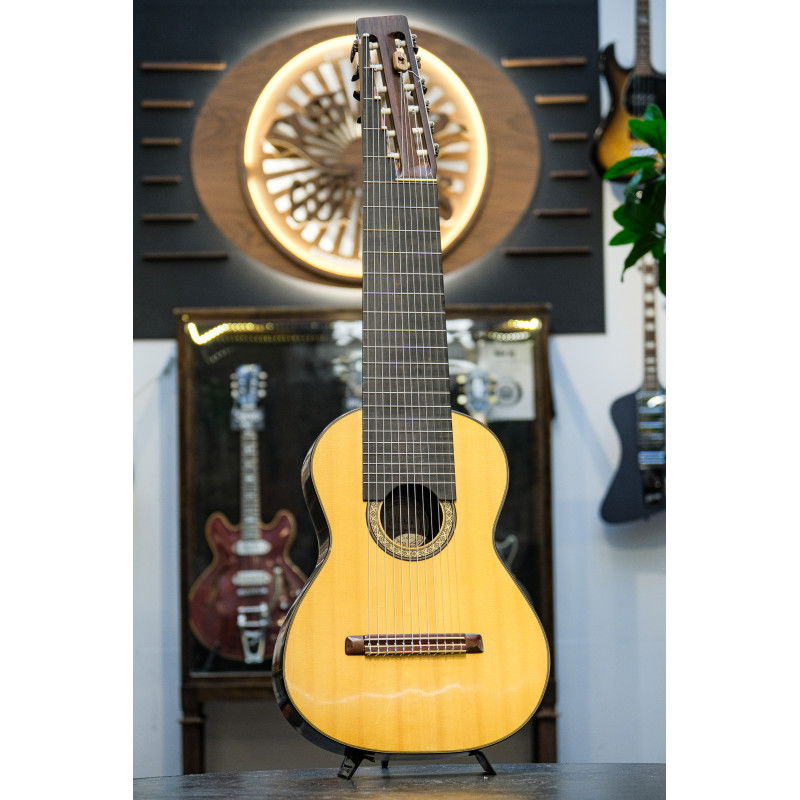
- SOLD!
1977 Georg Bolin Alto Guitar Elfstrik 12-string natural
Made in Sweden
Excellent condition, 8/10, Made in Sweden, including original hardcase and the original wooden capodaster for this fingerboard (a cool and rare accessory that we haven't seen before!), the label has the name of the guitar "Elfstrik" and "Stockholm 15.3 (March 15th) 1977" and is signed by the luthier himself, we are aware of an 11-string alto guitar built by Bolin which also is called Elfstrik and it was custom built for famous troubadour Fred Åkerström, not sure why they have the same name, perhaps a copy built for him as well? Beautiful woods have been used in this guitar, Bolin, a native of Gotland, was the cabinetmaker who started building guitars, and also grand pianos, and was so respected that he eventually became the principal of Carl Malmsten's furniture school in Stockholm. Bolin liked to name his guitars with a connection to Gotland. He called this series "Elfstrik" after an expression for fiddlers of the common people who, according to legend, learned to play from "The Elves or the little ones under the earth", more info from Wikipedia: The eleven-string alto guitar (also known as altgitarr, archguitar, or Bolin guitar) is an extended-range classical guitar developed by Swedish luthier Georg Bolin in the 1960s. Original Bolin instruments are now rare and valuable.[1] The Bolin alto guitar most often has eleven strings, but Bolin also made a thirteen-string version. The 11-string alto guitar is a multi-string classical guitar, which generally refers to classical guitars with more than six strings. Classical guitars with extra strings can have from seven to 13 or more strings.[2] However, an 11-string is the most useful for performing lute music, particularly Bach and Weiss. The first six strings are tuned in the same intervals as the normal classic guitar. Therefore, a musician can play with conventional fingering on those strings. History Georg Bolin first constructed 11-string alto guitar with collaboration with Swedish guitarist Per-Olof Johnson in the 1960s. Johnson is the teacher of a well-known guitarist Göran Söllscher who made this instrument famous through his extensive usage of Bolin's 11-string alto guitar.[4][5] Johnson was fond of lute music, but the difference in playing techniques between guitar and lute is significant, and he was looking for a way to play lute music using guitar playing technique. Thus, the design goal was specifically to allow guitarists to play renaissance lute music. This design introduced two main elements. The first was to provide conventional lute tuning by tuning the first six strings a minor third higher (hence the name "alto guitar"). It is equivalent to putting a capo on the third fret of the normal prime guitar. The second element was to add five extra strings to accommodate low notes. Tuning The typical 11-string alto guitar tuning is (from low to high strings): Bb1 C2 D2 Eb2 F2 G2 C3 F3 Bb3 D4 G4.[6]


























































































